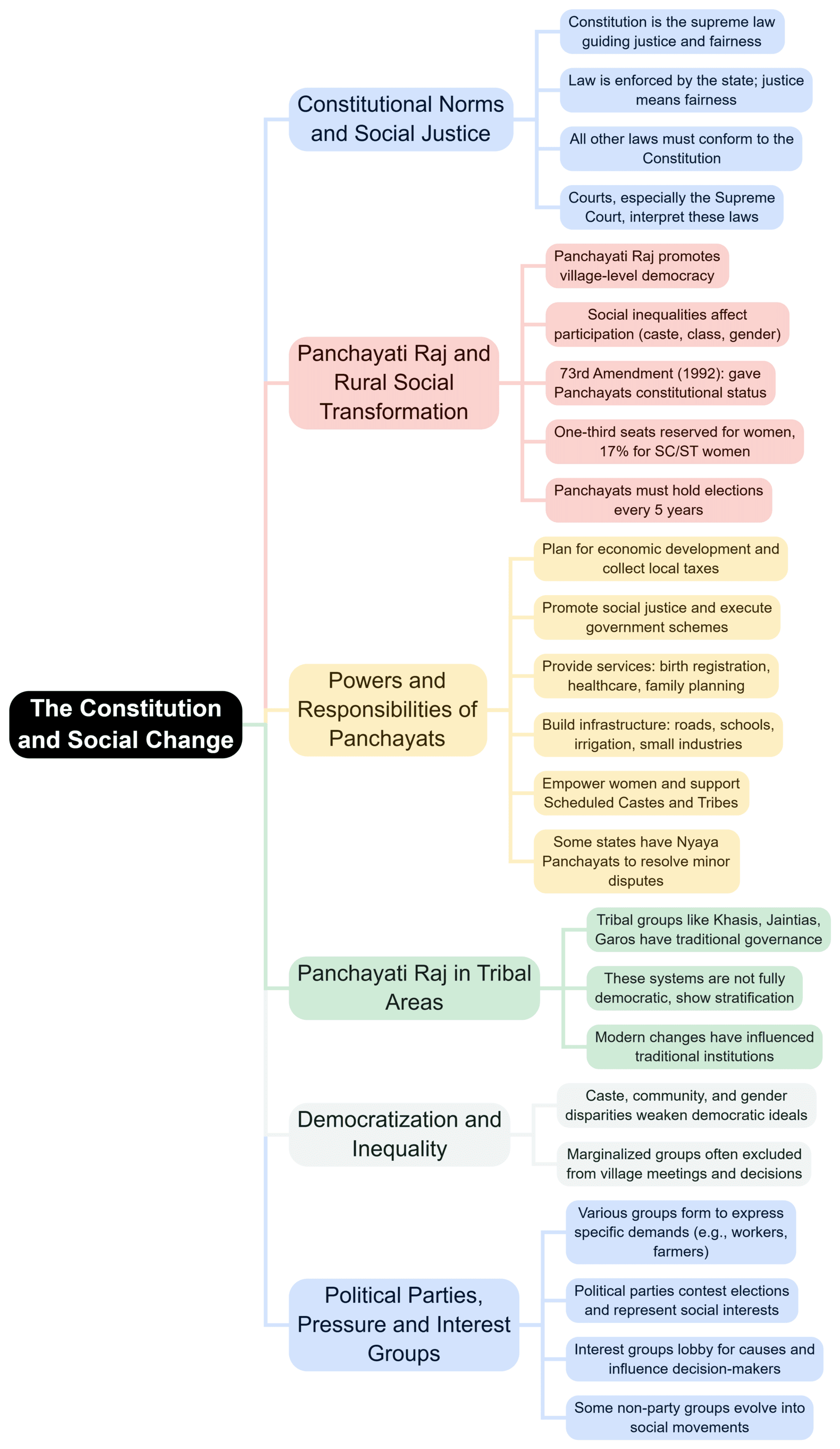Humanities/Arts Exam > Humanities/Arts Notes > Sociology Class 12 > Mind Map: The Constitution and Social Change
Mind Map: The Constitution and Social Change | Sociology Class 12 - Humanities/Arts PDF Download

The document Mind Map: The Constitution and Social Change | Sociology Class 12 - Humanities/Arts is a part of the Humanities/Arts Course Sociology Class 12.
All you need of Humanities/Arts at this link: Humanities/Arts
|
62 videos|157 docs|25 tests
|
FAQs on Mind Map: The Constitution and Social Change - Sociology Class 12 - Humanities/Arts
| 1. How does the Constitution facilitate social change? |  |
Ans. The Constitution serves as a foundational legal document that outlines the principles and values of a society. It enables social change by providing mechanisms for amendments, ensuring that laws can evolve with societal needs. Through judicial interpretations and landmark rulings, the Constitution can promote civil rights and liberties, facilitating social progress and reforms.
| 2. What role do amendments play in the context of social change? |  |
Ans. Amendments are formal changes or additions to the Constitution that reflect evolving societal values and norms. They allow for the incorporation of new rights and protections, such as those seen in the Bill of Rights. By allowing for these changes, amendments play a crucial role in addressing injustices and promoting social equity, thus driving social change.
| 3. Can you provide examples of landmark Supreme Court cases that impacted social change? |  |
Ans. Landmark Supreme Court cases such as Brown v. Board of Education, which declared racial segregation in public schools unconstitutional, and Roe v. Wade, which recognized a woman's right to choose, significantly influenced social change. These cases not only reshaped legal precedents but also impacted public perceptions and social movements, driving further reforms.
| 4. How does public opinion influence constitutional interpretation and social change? |  |
Ans. Public opinion can significantly influence constitutional interpretation as it shapes the context in which courts operate. When societal attitudes shift, courts may be more inclined to interpret constitutional provisions in ways that align with contemporary values. This interplay between public sentiment and judicial decisions can lead to significant social change, as seen in various civil rights movements.
| 5. What is the significance of the separation of powers in promoting social change? |  |
Ans. The separation of powers among the legislative, executive, and judiciary branches ensures that no single branch holds excessive power, allowing for checks and balances. This framework enables diverse perspectives and interests to be represented in the lawmaking process, fostering dialogue and compromise. As a result, it promotes social change by allowing for the consideration of various social issues through legislative action and judicial review.
Related Searches





















